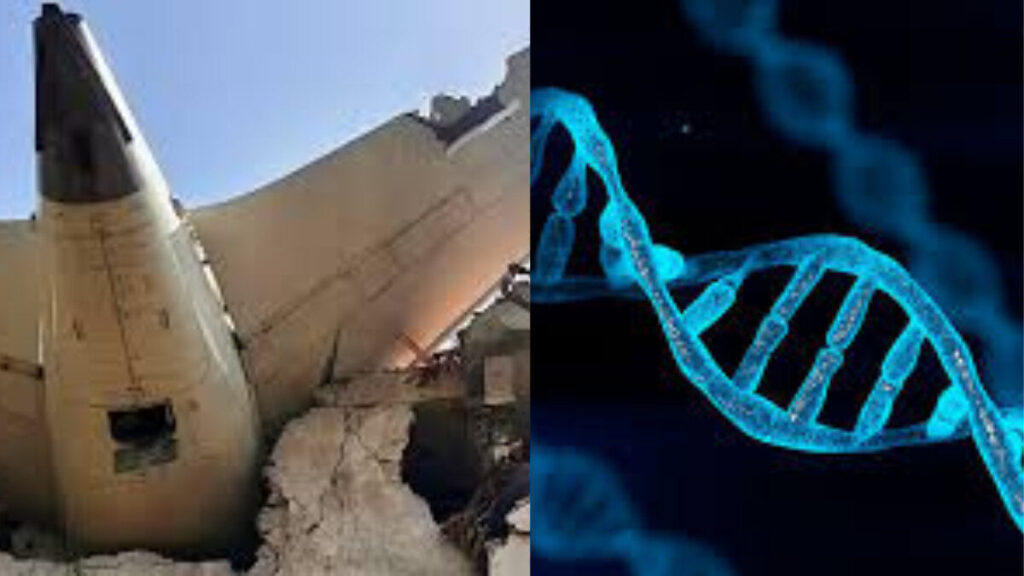
Ahemdabad Plane Crash: Victims’ DNA Footprinting For Individual Identification: DNA Identification Process, Types of Methods Used, Etc.
Context: The remains of the victims of the Ahmedabad plane disaster were severely burned and fragmented, making visual identification all but impossible. In response, forensic teams used sophisticated DNA fingerprinting methods to precisely determine each person’s identity. The importance of DNA profiling in mass disaster victim identification and humanitarian response was brought to light by this procedure.
A forensic method for identifying people based on distinctive patterns in their DNA is called DNA fingerprinting or DNA footprinting or DNA profiling or DNA identification process. Criminal investigations, paternity disputes, disaster victim identification, and cases involving missing persons have all been transformed by this scientific method.
The genetic material found in humans and nearly all other species is deoxyribonucleic acid, or DNA. Every person has a different DNA sequence, with the exception of identical twins.
The practice of examining particular DNA regions that differ significantly between people is known as DNA profiling. These changes, which repeat sequences in non-coding areas of DNA, are known as Short Tandem Repeats (STRs). Forensic specialists can ascertain identify or biological ties by analyzing the STRs in DNA samples.
DNA profiling can be done using other 3 popular but critical methods, as given below in details
The mitochondria, which are located outside the cell nucleus, contain mitochondrial DNA, which is inherited maternally. It does not recombine and stays mostly unaltered over generations, in contrast to nuclear DNA. Because of this, it is useful for identifying remains in cases when nuclear DNA is damaged or nonexistent, particularly in ancient teeth, hair shafts, or bones. When it comes to identifying missing people or disaster victims, mtDNA is especially helpful.
This method is helpful for tracking down paternal ancestry because it focuses on the Y chromosome, which is passed down from father to son. It is frequently used to identify male DNA in a female victim’s sample in sexual assault cases. Similar to mtDNA, the discriminatory power of Y-chromosome profiles is limited since they are shared among paternal relatives rather than being unique to individuals.
SNPs are single-base changes that occur approximately every 1,000 bases in the DNA sequence. SNP analysis offers comprehensive genetic data and can be applied to highly degraded samples, phenotypic trait prediction, and ancestry inference. Combining several SNPs can increase identification accuracy, particularly in complex instances, even if they are not as discriminative as STRs for forensics.
DNA Identification Process involves following steps-
Gathering of Samples: Blood, semen, saliva, hair roots, and skin cells are among the biological samples that are taken from crime scenes or people.
DNA Extraction: Chemical procedures are used to separate the DNA from the gathered cells.
Quantification and Amplification: Polymerase Chain Reaction (PCR), which produces numerous copies of particular DNA sections, is used to quantify and amplify DNA.
STR Analysis: To generate a DNA profile, particular STR loci are analyzed. Analysis at 13–20 STR loci is a common feature of forensic DNA profiles.
Comparison: The acquired DNA profile is contrasted with profiles from databases or known people.
Interpretation and Matching: A match suggests that the person whose sample is being examined is most likely the owner of the DNA found at the site. There is very little chance that two people will have the identical STR pattern.
Also Read: International Yoga Day 2025
Also Read: Swachh Bharat Mission
Similar News
No results available
ResetNo results available
ResetStay updated with our daily newsletter. Get the latest news delivered straight to your inbox.
Connect with us on social media for the latest updates and engaging content. Follow us on Facebook, Twitter, Instagram, and LinkedIn.
© 2024 Khabarin24. All rights reserved. | Designed By : Ankivo